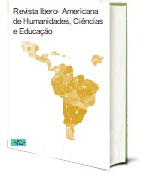FROM ENTROPY TO SYNTROPY: THE STRATEGIC PLANNING BRINGING ORDER TO ORGANIZATIONAL CHAOS
DOI:
https://doi.org/10.51891/rease.v8i11.7895Keywords:
Entropy. Syntropy. Strategic Planning. Organization. Systems.Abstract
The elaboration of a plan allows us to understand the actions to be taken in a clear way, enabling effective decision making by means of strategies that are well improved for the scenarios in which they are inserted. The concept of entropy found in physics is present in the daily life of organizations, and may prevent their longevity and/or success, leading them to chaos, isolating the organization from the surrounding environment, so that they do not find the best strategies and take wrong decisions. The concept of syntropy, in opposition, allows strategies to be more assertive, through the relationship of mutual influence. The distancing of entropy and, consequently, the approximation of syntropy, brings order where the tendency is chaos, bringing direction and confluence to the surrounding environment. This requires direction. In the search for the best possible results, the strategic planning, as a guideline guide.
Downloads
Downloads
Published
How to Cite
Issue
Section
Categories
License
Atribuição CC BY

